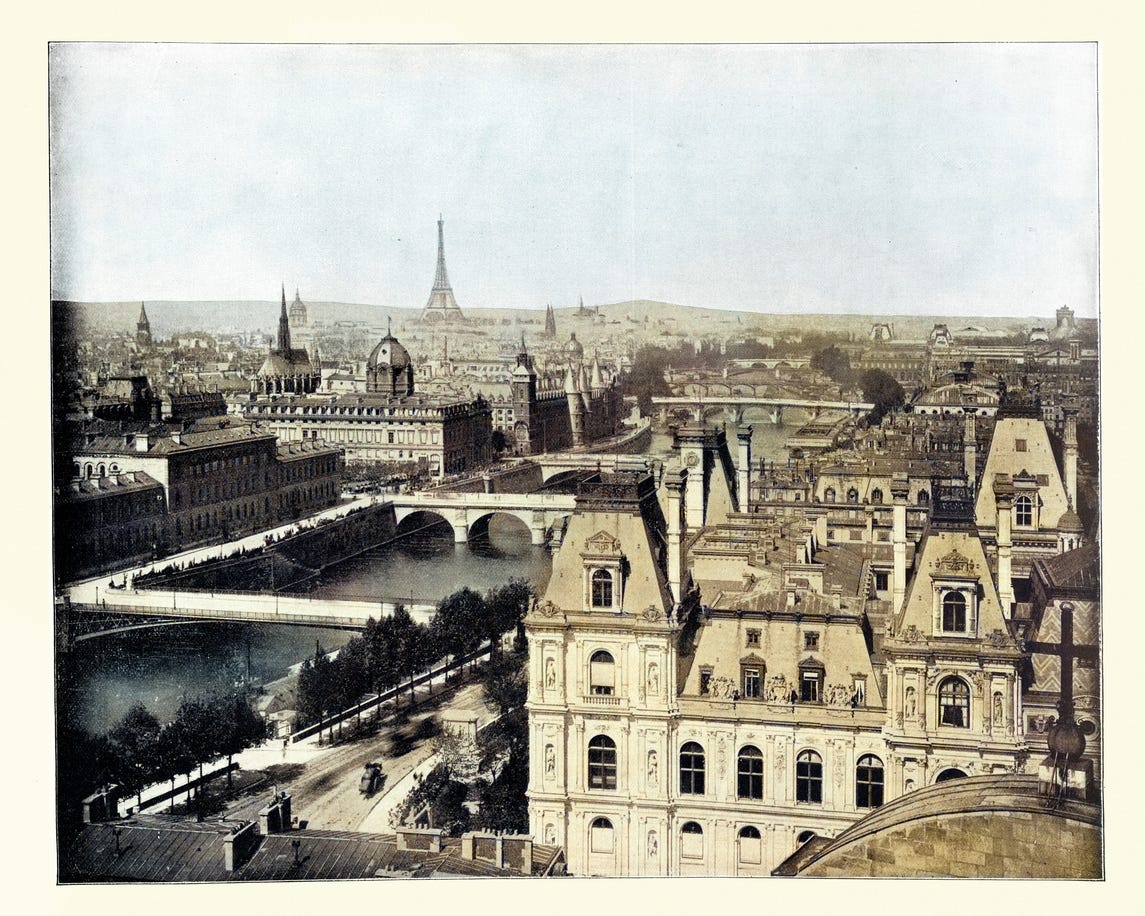Sipping Through Paris Like a Literary Legend
From Hemingway’s cocktails to Wilde’s decadence—inside the bars where great writers drank, dreamed, and debated.

Oscar was notorious for his razor-sharp wit. Gertrude was the original bohemian. And Ernest…? Well, we’ve all heard about Ernest. Their stories, much like their reputations, precede them. As do the bars where they used to drink, write, and philosophize about life.
Many visitors to Paris know about Hemingway’s Bar at the Ritz, but several lesser-known yet equally fascinating literary bars dwell within the city. My wife, Teresa, and I took to the streets of Paris to seek them out.
Vintage American Nonchalance
In 1911 a famous American jockey named Tod Sloan bought a New York bar, had it disassembled, shipped to Paris and rebuilt. He hired a Scottish barman named Harry MacElhone to run the place, and when Sloan ran into money troubles a decade later, Harry bought the bar and added his name to it.
Not much has changed at Harry’s in the last hundred years. The American sports bar, just a few blocks from the Palais Garnier Opera House is, bizarrely, the most authentic bar in all of Paris. A pair of weathered, leather boxing gloves hang over the original mahogany bar, and the paneled walls are covered with antique sports pennants from American colleges.
The bar attracted American literary legends F. Scott Fitzgerald, Gertrude Stein, and Ernest Hemingway. George Gershwin reputedly composed An American in Paris at the bar’s piano.
Harry’s is not only the oldest cocktail bar in Europe, it’s also the place where several classic cocktails were invented, including the Bloody Mary.
I chose the rum Knickerbocker, which the menu declared was created "before 1862." My other drink was the 1937 Coronation, which was whiskey forward, but went down easy with the grenadine.
Teresa stuck to the modern drinks, starting with the gin Rowing Blazers. Her second choice was the Alberica—mezcal, rye, Peter Herring, Fernet Branca, and vaguely referenced "mountain plants."
Empire Style Decadence
In 1967, the new owners of Wilde’s Lounge in L’Hotel ran with the theme of decadence and vamped up the lounge with lurid green couches, purple curtains, and leopard-print carpet.
L’Hotel was the first ‘boutique’ hotel in Paris in the early 19th-century—the Neoclassical Empire Period.
It was the final home of the famous British author and playwright, Oscar Wilde, and their cocktail lounge has been named in his honor. His portrait is enshrined at the far end of the lounge, while a black, leather-bound volume of his collected works graces the bookshelf.
After the Left Bank near the Seine fell into decline over the years, L’Hotel became a brothel. By the time Oscar Wilde took up residence in his final year (1900), it was a shadow of its former self. Management welcomed the playwright despite knowing he would never pay his bill. Wilde, financially ruined and in failing health, was grateful for the hospitality. "I am dying beyond my means," he wrote to a friend.
Decades later, in the 1960s and ‘70s, the neighborhood underwent a renaissance, and L’Hotel transformed from a forgotten relic into a fashionable hotspot. Wilde’s Lounge became a magnet for the likes of Salvador Dalí, Frank Sinatra, Elizabeth Taylor, Richard Burton, and Jim Morrison.
We sipped fruity purple cocktails in the dim light. I ordered the sloe gin Charlie Chaplin. Teresa ordered the signature drink, "L’Hotel"—cherry purée, fresh lemon, vodka, and St-Germain liqueur.
Belle Epoque Opulence
Stepping into the salon of the five-star Hotel Maison Proust takes you back 150 years to La Belle Epoque—a time when culture and the arts flourished in Paris.
The interior is sumptuous, with velvet teal chairs and couches around low onyx tables. Crystal chandeliers sparkle sapphire lights overhead. The walls are lined with 19th-century portraits of elegant ladies. Fringed maroon curtains drape every alcove, and the carpet is a lush red-and-pink floral design.
In opulent upper-class salons like this one, artists, writers and other luminaries discussed the current events of the day. Young Marcel Proust found his way into their midst, and in his books captured their mannerisms and temperaments in vivid detail.
I ordered a Comte De Nassau, a bespoke calvados/rye/vermouth/Benedictine concoction that looked like a Manhattan, but tasted more complex. Teresa went for the Prince de Sagan: rum infused with white jasmine tea, ginger syrup and lime.
At the far end of the salon we discovered a circular library: a miniature rotunda stocked with leather-bound books, including one displayed in a glass case, written and signed by Marcel Proust.
The Salon at Maison Proust is where you might go for a special occasion to speak of love and philosophy.
After drinking our way through the city, it was easy to imagine the long evenings famous writers spent imbibing here. How did they manage to get anything written at all?
— Tim Ward is the author of Mature Flâneur: Slow Travels through Portugal, France, Italy, and Norway.
Editor’s Note: This story first appeared in the pages of International Living magazine. Want more tales and expert insights like this? Click here to learn more.


